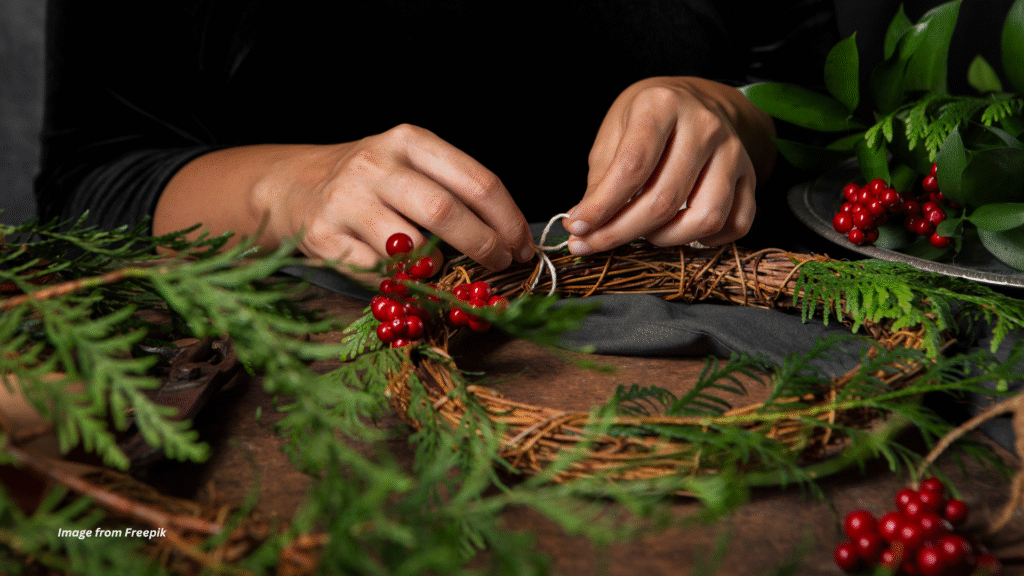When winter settles in and the vibrant blooms of summer fade away, beauty doesn’t hibernate—it simply shifts. Winter foliage takes center stage, offering texture, structure, and a rich palette of greens and silvers that define the season’s natural elegance. In the floral industry, embracing winter greenery is not just a necessity—it’s an opportunity to create striking, sculptural arrangements that evoke the quiet magic of the colder months.
Winter foliage provides the backbone of seasonal design. In the absence of abundant flowers, these textural greens add volume, depth, and longevity to arrangements. Many varieties also carry fragrances, enhancing the sensory experience of winter decor.
Whether you’re designing for a festive centerpiece, a holiday mantelpiece, or a wintry wedding, foliage offers flexibility and form that floral elements alone can’t match. With its durability, fragrance, and natural elegance, greenery becomes the heart of seasonal design—perfectly reflecting the quiet beauty of winter. By embracing the textures and tones of winter’s greens, you can craft arrangements that feel both luxurious and grounded in the season’s charm.

Top Winter Foliage Picks
Cedar
With its soft needles and graceful drape, cedar is a go-to for garlands and wreaths. It adds a romantic, woodland feel with a beautiful fragrance. It works beautifully as a base for arrangements, adding a cascading look.
Pine & Fir
Classic evergreens like pine and noble fir bring a strong seasonal identity to any arrangement. Their sturdy needles and conical shapes make them ideal for both structure and scent.
Magnolia Leaves
With their glossy green tops and velvety brown undersides, magnolia leaves add rich contrast and elegance. They dry beautifully and work well in high-end designs.
Dusty Miller
Soft, silvery, and almost frosty in appearance, dusty miller is a beautiful accent that complements white, burgundy, and deep green elements in winter arrangements.

Design Tips for Winter Foliage
- Layer textures: Mix needle-like greens with broadleaf varieties for contrast and movement.
- Keep it natural: Let some elements drape organically to reflect the wild beauty of winter.
- Color Contrast:
Mix deep green evergreens with blue-gray eucalyptus, golden cedar, or the copper tones of magnolia for a dynamic palette. - Add seasonal accents: Pair foliage with pinecones, dried citrus, or fresh berries for a festive touch.
Handling Sap
Evergreen sap (especially from pine and spruce) can be sticky, stubborn, and slow to come off—but it can be managed.
To Remove Sap from Hands:
- Olive Oil or Baby Oil: Rub a small amount into your hands to dissolve the sap, then wash with warm soapy water.
- Hand Sanitizer or Rubbing Alcohol: Alcohol breaks down resin quickly—apply, rub, and rinse.
- Baking Soda Paste: Mix baking soda and a bit of dish soap into a scrub for stubborn residue.
- Citrus-Based Cleaners: Natural orange hand cleaners (like those used by mechanics) work wonders on resin and are gentle on skin. Avoid using harsh solvents like turpentine—these can irritate skin.
- Wipe Pruners Often: Sap builds up fast on blades. Keep rubbing alcohol or hand sanitizer nearby and wipe tools between cuts.
Skin Care for Florists
Winter greens + cold weather = dry, sticky hands!
Keep your hands happy with these pro habits:
- Moisturize after every shift (look for lotions with glycerin or shea butter).
- Use a nail brush to remove sap from under fingernails.
- Keep a small bottle of oil or sanitizer at your design station for quick cleanup.
- Thin nitrile or latex gloves work well for sticky greens like pine, spruce, and fir, while bare hands are fine for magnolia and eucalyptus if you prefer more dexterity
Winter greens remind us that beauty endures in every season. By celebrating their texture, fragrance, and resilience, you can capture the essence of winter—not as a dormant season, but as one full of quiet elegance and creative opportunity.

About the Author
Nita Robertson, AIFD, is a floral industry leader, educator, and creative professional with more than 20 years of experience. A Certified Floral Designer since 2014 and inducted into AIFD in 2015, she has held leadership roles, including Teleflora Education Unit Past President, AIFD Northwest Regional Past President, and currently serves as National Marketing Committee Chair. Nita owned Santa Cruz Floral for 17 years before becoming Publisher and Sales Manager at Florists’ Review Media Group (2021–2025), where she combined editorial leadership, advertising strategy, and design education to grow engagement across print and digital platforms. Today, she continues to inspire and strengthen the floral community nationwide as one of the industry correspondents for New Bloom Media.
Published by New Bloom Media
New Bloom Media (NBM) is the first multi-channel B2B media platform dedicated solely to the floral industry across the Americas. Through thought leadership, industry insights, and collaborative storytelling, NBM helps businesses innovate, connect, and thrive.
Want more floral industry insights?
Subscribe to our newsletter for exclusive interviews, market updates, and innovation spotlights delivered straight to your inbox.



